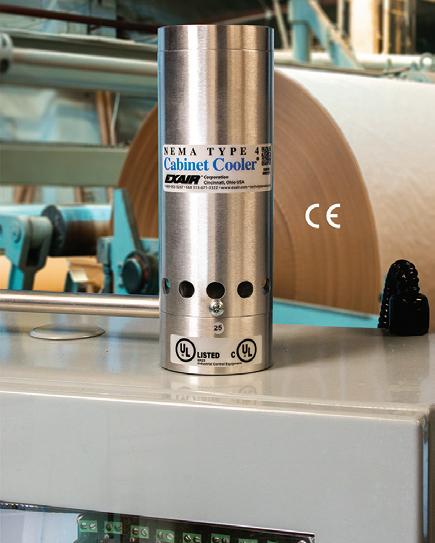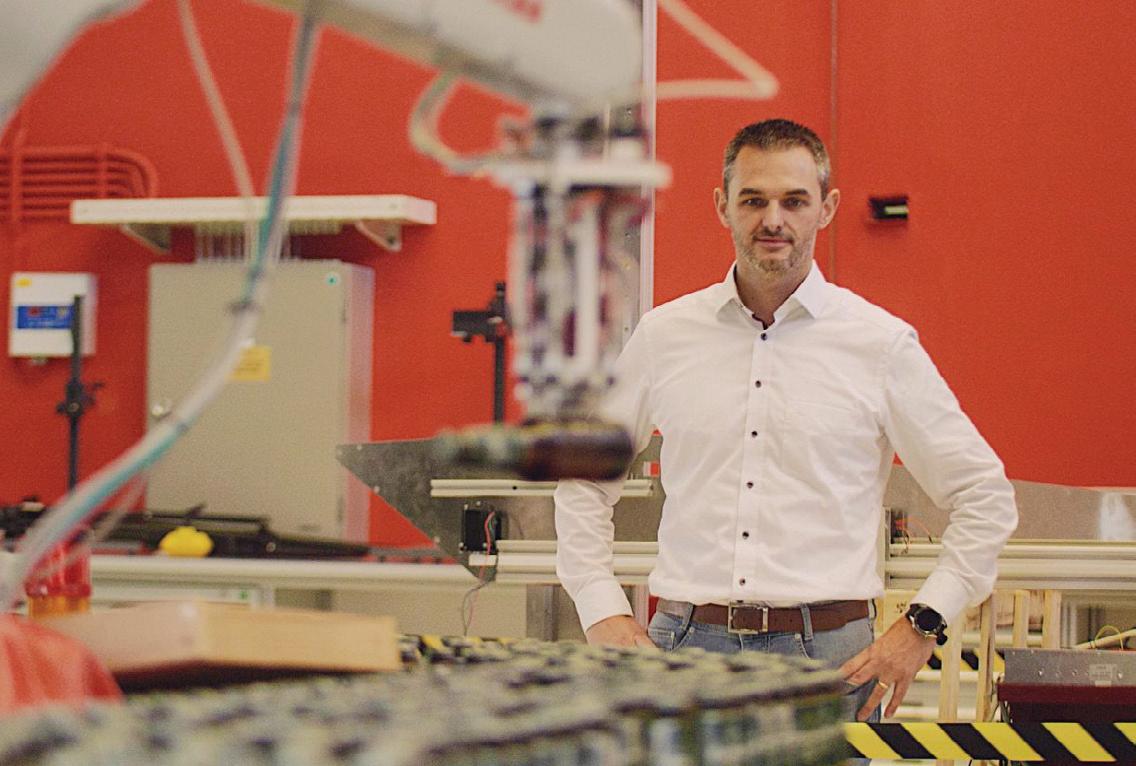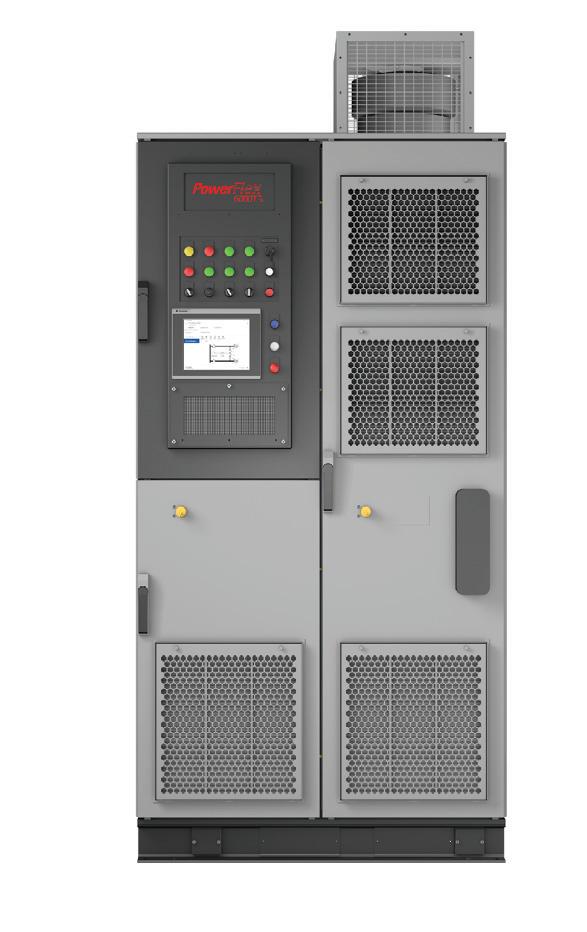
18 minute read
National operations in a COVID-19 environment
©stock.adobe.com/au/Marina Andrejchenko
Whilst COVID has no doubt been disruptive, it has come with positives. The necessity of having the majority of staff working remotely has forced the evolution of our ISO9001 system to progress to online documentation wherever possible. AMS estimate that we’ve cut the amount of paper produced in documenting job file information by 75%. The associated on-costs in terms for running a printer have fallen in similar proportion. Prior to that, complex jobs could produce job files using substantial volumes of paper. An added benefit has been increased visibility of job-related data across the organisation. With the relevant supporting data on the server, anyone can access it, whereas previously staff had to go and get the job file from the office storage area and review physical copies. This is clearly a problem for interstate-based staff. Against that, now there are more printers as some of those working from home have had to purchase one to work off-site.
Another difference is the noticeable difficulty in getting access to various sites. Manufacturers in the food and beverage industry seem to be particularly reticent about letting external people on site. Given the potential requirement for deep cleans in the event an infected person is subsequently found to have visited a site, this is prudent and not surprising. There’s also the fact that many technical staff are now at least partially working from home. Availability for the traditional face-to-face meeting has reduced accordingly. And now when you do get on site there is often the awkward moment of offering a handshake or not. At least the awkwardness is widespread enough that everyone has been there before and it’s often something to laugh about and break the ice. Online meetings and product demonstrations have become more common and YouTube channels have become increasingly important for both process equipment manufacturers and distributors alike. I feel most would agree, though, that these are substandard replacements for actual meetings. We just need to make do.
Planning for site visits has become almost academic. Even now as Victoria, SA and NSW are under lockdown, the idea of planning to visit a site is almost a waste of time: anything beyond a week ahead is a lottery. The only certainty right now is that you’ll be working from home and trying to interact with your stakeholders as best you can. We and our suppliers run webinars on technical solutions and applications when we can, but over time it appears to become more difficult to attract an audience. For a while they had some novelty value but now I suspect that technical staff inboxes are inundated with invitations from various sources throughout the industrial sector up and down the supply chain. There is efficiency in being able to attend webinars without leaving your desk but it’s also a bit impersonal. That said, television documentaries have found audiences for years and webinars can be very educational.
There has also been a lot of discussion about the security of supply chains and production over the last year or so. Many suppliers are based in countries that have had widespread COVID-19 exposure. In general, they have kept operations ticking over without obvious evidence of supply security difficulties. In our experience, some supplier schedules have drifted out by a couple of weeks and there are isolated incidences of real difficulty, but overall our experience has seen minimal hiccups. One of our suppliers has warned of rising concerns over securing microchips for board assemblies. This is an issue that has severely impacted production in some industries but doesn’t seem to have had a broad effect among our suppliers; at least not yet.
Overall, I’d have to say the biggest change has been an increased awareness and focus on managing mental health and motivation among staff. Lockdowns are trying, and the isolation of working long stints from home can wear you down. But having polled most of our staff, the general feeling is that a mix of working from home and time in the office may be the most lasting change we see out of this experience. There are many advantages to working at least some of your time from home, and now it’s been field tested to prove it can work.
After studying Electrical Engineering and Accountancy, Tom Kuiper joined AMS. Nearly 20 years later he is the National Sales Manager. As AMS sells a broad range of process equipment, he’s been exposed to a wide of applications and industries.
ETHERNET REMOTE I/O MODULES
Acromag’s BusWorks NT2000 series remote I/O modules provide an Ethernet interface for analog, discrete and temperature signals. NTE Ethernet I/O models have dual RJ45 ports and a web server with Modbus TCP communication to monitor or control the internal I/O channels. An integrated DIN rail bus allows connection of up to three NTX expansion I/O modules. Each I/O module adds up to 16 input or output signals allowing a mix of voltage, current, temperature, TTL and relay control signals networked on one IP address. The space-saving design requires 25 mm of DIN rail per module. Ethernet I/O modules distribute 9–32 VDC power along the DIN rail bus to expansion modules. Additionally, hazardous location approvals, high noise immunity and -40 to 70°C operation make this I/O suitable for use in harsh environments. The NT2000 Series offers a broad variety of I/O signal processing options. Nine I/O configurations are available as either NTE Ethernet I/O or NTX expansion I/O models. Analog I/O models feature eight differential or 16 single-ended inputs, for monitoring current or voltage signals.
Discrete I/O models provide 16 tandem I/O channels with either active high/low input and sinking/sourcing output. A six-channel mechanical relay output model is also available. For temperature monitoring, a thermocouple input model supports many sensor types and also millivolt ranges.
Currently, the NTE I/O modules support only Modbus TCP communication, but will soon include EtherNet/IP and Profinet protocols. The modules typically function as a network slave, but also offer Acromag’s i2o peer-to-peer communication technology.
Metromatics Pty Ltd
www.metromatics.com.au

ETHERCAT INCREMENTAL ENCODER
The ICP DAS ECAT-2092T is an EtherCAT slave incremental encoder counter that provides two independent high-speed counter channels. It reads the pulse train generated by an incremental encoder and can be used in positioning feedback applications. Each channel has two counters (A, B) and one index input (C). The inputs can either be single-ended or differential signals. Three counting modes are supported: clockwise/anticlockwise, pulse/direction and quadrant counting mode. Each 32-bit counter and the trigger level (falling/rising edge) can be configured and set by software.
In addition to the encoder inputs, latch input I for each encoder channel allows the latching and clearing of each encoder counter. Encoder position is latched at rising and falling input signal and recorded in two separate registers.
The product also supports position comparison: each encoder channel is equipped with one 32-bit compare register, which compares the counter position with the compare position and generates an output signal when the counter reaches or passes the compare position. The compare function supports single, auto-incremental and array position compare. The pulse width of the compare output can be set. Lastly, each channel has an adjustable input signal filter for filtering out electrical noise.
ICP Electronics Australia Pty Ltd
www.icp-australia.com.au


COMPACT CABINET COOLERS
EXAIR’s cabinet cooler systems can be customised to provide cooling within electrical enclosures in NEMA 12, NEMA 4, NEMA 4X and hazardous location environments. These customisations include specific Btu/h values from 275–5600 Btu/h, adaptations for high temperature environments up to 93°C and a selection of materials including aluminium, and type 303 or 316 stainless steel, to combat corrosive environments. For dirty and dusty environments, a non-hazardous purge option will create a positive pressure inside the cabinet to keep dirt and debris from entering the control panel. All systems are UL Listed and CE compliant.
Additional customisations include settings to maintain a specific cabinet temperature, special coatings, high-temperature materials and cold air distribution kits. Cabinet cooler systems are a low-cost way to purge and cool electrical control panels. They convert an ordinary supply of compressed air to cold, -7°C air, without refrigerants. The cold air is circulated through the enclosure to eliminate heat damage and control shutdown.
The compact cabinet coolers can be installed in minutes through a standard electrical knockout hole. Optional thermostat control minimises compressed air use. There are no moving parts to wear out and no maintenance required. Applications include cooling PLCs, microprocessors, variable frequency drives and industrial computers.
Compressed Air Australia Pty Ltd
www.caasafety.com.au
THREE KEY CHALLENGES FACING THE UTILITIES SECTOR

The utilities sector is one of the most essential critical infrastructure industries. Power generation, distribution and supply, water supply and treatment, and natural gas are essential services for the smooth running of society. During a blackout or when the water is turned off, people can’t go about their daily lives as normal. When these outages last for longer than a few hours, people fi nd themselves unable to perform basic life functions like eating, drinking, and washing. This can quickly lead to widespread panic and, in the event of prolonged outages, can even cause civil unrest and antisocial behaviours such as looting.
A successful cyberattack on a utilities provider is likely to cause widespread disruption, making these critical infrastructure operators a prime target for cybercrime. Cyberattackers can use connected devices and control systems to disable or sabotage the operational technology (OT) that controls the operations of these organisations. The outcomes can include sustained power outages, toxins leaching into water supplies, or even explosions and equipment malfunction leading to injuries and even death.
SCADA systems, industrial control systems (ICS) and other OT used to be protected from cyberattackers because they were air-gapped. Now, these technologies have become increasingly connected to each other and to the internet, which delivers signifi cant business and effi ciency benefi ts but also opens up these systems to the risk of cyberattack.
Protecting OT from online attacks is not the same as protecting corporate information technology (IT) due to the specialised and often delicate nature of OT assets. Utilities operators usually run a variety of systems with differing age, performance, function, business criticality, and upgrade cycles. Put simply, gaining visibility into the OT network can be a challenging task.
New legislation is coming into force in Australia that will require critical infrastructure operators, such as utilities, to demonstrate how they are protecting their systems and networks against cyberattacks.
When it comes to securing their critical infrastructure assets, utilities are facing three key challenges.
1. Increased complexity
ICS and SCADA systems are being connected for remote monitoring and management, while new systems and capabilities are coming online all the time. This is creating increased complexity in the OT environment, making it harder to achieve full visibility and control over all the systems and critical assets.
2. New equipment and threats
Utilities operators regularly invest in new equipment to increase safety or performance. As new equipment is added to the environment and connected to the network, it creates another potential gateway for a cyberattack unless it is secured appropriately. This trend will continue as organisations in the utilities industry continue to fi nd new ways to provide energy and water.
For example, in the future, micro-nuclear capabilities may create effi ciencies as the energy industry looks to replace coal and gas in a bid to reduce CO2 emissions. These micro-nuclear plants could potentially deliver relatively safe, clean power but could also create an environmental hazard if successfully breached by a cyberattacker.
3. Visibility and control
The long lifespan of OT and its mission-critical function makes it unviable to replace older systems before they reach end-oflife. However, protecting older systems is challenging because these systems were, in most cases, never designed to be connected to the internet. This means they weren’t designed with cybersecurity in mind, so they can’t be easily patched or protected. Moreover, the use of monitoring agents can disrupt the system’s operations, making it an impractical way to gain visibility.
Adding to these challenges, utilities are also constrained by a lack of budget and resources for cybersecurity projects as well as the shortage of specialised cybersecurity skills.
Rapid robotics for safety: what a bottle picker can do
Dutch brewing company Heineken is one of the largest beer producers in the world, with more than 70 production facilities globally. From small breweries to mega-plants, its logistics and production processes are increasingly complex and its machinery evermore advanced. The global beer giant therefore began looking for robotics solutions to make its breweries safer and more attractive for employees while enabling a more flexible organisation. Automatically adapting to the situation
“We are becoming a high-tech company and attracting more and more technically trained staff,” said Dennis van der Plas, Senior Global Lead Packaging Lines at Heineken. “Repetitive tasks — like picking up fallen bottles from the conveyor belt — will not provide them job satisfaction.”
As part of the SMITZH innovation program*, Heineken and RoboHouse fieldlab, with support from the Netherlands Organisation for Applied Scientific Research (TNO), have developed a solution on the basis of flexible manufacturing: automated handling of unexpected situations.
According to Shobhit Yadav of TNO, flexible manufacturing is one of the most important developments in smart industry. “Today, manufacturing companies mainly produce small series on demand. It means that manufacturers have to be able to make many different products. This can be achieved either with a large number of production lines or with a small number that are flexible enough to adapt,” he said.
The Heineken project fell into the second category and involved developing a robot that could recognise different kinds of beer bottles that had fallen over on the conveyor. The robot had to pick them up while the belt was still moving.
“The environment is constantly changing and the robot has to be able to respond immediately,” explained Yadav. “This is a typical example of a flexible production line that automatically adapts to the situation.” Robotics for a safe and enjoyable working environment
Experimenting without a business case
Heineken initially made contact with RoboHouse fieldlab through a sponsorship project with X!Delft, an initiative that strengthens corporate innovation and closes the gap between industry and Delft University of Technology. “The lab is the place to meet for anyone involved in robotics,” said Reurslag. “It is also linked to SMITZH and thus connected to TNO.”
The parties soon realised that their ambitions overlapped. Heineken was seeking independent advice and both TNO and RoboHouse were looking for an applied research project that focused on flexible manufacturing. “This kind of partnership is very valuable to all involved,” said Yadav. “SMITZH allows us at TNO to work with current issues in the industry and establish valuable contacts, which makes our research more relevant. In turn, manufacturers have somewhere to go with their questions and problems regarding smart technologies.” A joint product by TNO and RoboHouse

“The automotive industry deploys robots for welding car parts, whereas our sector uses them for automatically palletising products,” said van der Plas. “But with this project we took a different approach. Our starting point was not a question of which robots exist and how they could be used. Instead, we focused on the needs and wishes of the people in the breweries, the operators who control and maintain the machines, and how robots could support them in their work.”
The solution, in other words, had to lead not only to process optimisation but also to improved safety and job satisfaction. In addition, it would result in Heineken becoming a better employer. It is why van der Plas and his colleague Wessel Reurslag, Global Lead Packaging Engineering & Robotics, asked the operators what they would need to make their work safer and more interesting. One of the use cases that emerged was picking up bottles that had fallen over on the conveyor belt: repetitive but also unsafe as the glass bottles could break.
TNO and RoboHouse distilled two research goals from the use cases presented by Heineken: enabling real-time robot control and using vision technology to direct the robots with cameras. The main challenge involved devising a solution that could be applied to Heineken’s high-speed packaging lines. TNO worked on the control and movements of the robot, while RoboHouse took on the vision technology aspect. This entailed recognising the fallen bottles, developing the system’s software-based control and building the ‘gripper’ to pick up the bottles.
“Communication between the robot and the computer is very important,” explained Bas van Mil, Mechanical Engineer at RoboHouse. “Our input and TNO’s work were complementary. For example, RoboHouse did not possess Yadav’s knowledge of control technology, which is
indispensable for controlling the robot. Through close cooperation, we really developed a joint product.” Every millisecond counts
The biggest challenge in detecting and tracking fallen beer bottles is that they never stop moving. As van Mil explained, “They do not just move in the direction of the bottle conveyor but can also roll around on the belt itself. In many existing robotic systems, the camera takes a single photo that informs the movements of the robot. The robot will do a ‘blind pick’ with no way of knowing whether anything has changed since the photo was taken. This only works if the environment stays the same — but in this case, it doesn’t.”
The solution involves a system in which the camera and the movements of the robot are constantly connected to each other. “Every millisecond counts, as the bottle will disappear from view and the robot will still try to pick it up from the spot where it was half a second ago,” said van Mil. A RoboHouse programmer developed the camera software to be as fast and efficient as possible. The fieldlab even purchased a powerful computer running an advanced AI system especially for the project.
TNO and RoboHouse then wrote a program together that determines the speed of the robot from the moment a fallen bottle is detected. This enables the robot to move with the bottle based on its calculated speed. It is what makes this robot so different from existing ones. “The robot responds immediately to changes,” said Yadav. “In fact, it is 30% faster than the current top speed of Heineken’s bottle conveyors. As a result, it has a wide range of applications and can be used in a variety of environments with different production speeds.” Smarter thanks to independent partners
Heineken valued not just the successful innovation but also the independent character of TNO and RoboHouse during the development process. “We now have a much better idea of what is technically feasible, what the challenges are and what we can realistically ask of our technical suppliers,” said van der Plas. “Thanks to this project, we can act much more like a smart buyer and make smarter demands of our suppliers. This information is relevant to have, especially as we operate in such an innovative field where we do not just buy parts off the shelf. After all, if I ask too little, I will not get the best out of my project. But if I ask too much, it affects our relationship with the supplier.”
The project has also served as a source of inspiration for van der Plas’s colleagues worldwide. “We have been sharing videos and reports from SMITZH on the intranet, building a kind of community within Heineken. We are receiving feedback as well as requests for the new robotic systems from breweries all over the globe,” he said. To meet the demand, van der Plas and Ruurslag want to supply breweries with a ready-to-use version. “We are currently looking for parties that can make the technology available and provide support services.”
Wessel Reurslag, Global Lead Packaging Engineering & Robotics at Heineken, is already looking for the next step: “A robotic solution that is plug and play, flexible and easy to integrate in the brewery.”
Meanwhile, RoboHouse and TNO aim to continue optimising the robot. “This is only the pilot version”, said van Mil. “We can still improve its flexibility, for example by installing a different vision module, thereby making the technology even more widely applicable.” Both organisations are therefore looking for use cases in which they can use the same technology to solve other problems. “We are looking at the bigger picture,” explained Yadav. “This project could serve as a model for similar challenges in other industries.” *SMITZH is an innovation program focused on smart manufacturing solutions in West Holland. It brings together supply and demand to stimulate the industrial application of smart manufacturing technologies and help regional companies innovate. Each SMITZH project consists of at least one manufacturing company and a fieldlab. RoboHouse served as the fieldlab in this project. Story originally published on RoboHouse: Original text by Joost van de Loo; photography by Daniel Verkijk.

MEDIUM-VOLTAGE DRIVES
Rockwell Automation has announced that its Allen-Bradley PowerFlex 6000T medium-voltage drives now include TotalFORCE technology, which NEW PRODUCTS is designed to provide precise control of speed and torque, diagnostic information for tracking system health, and automatic adjustments to keep operations running smoothly.
The drives follow speed or torque commands closely in both open- and closed-loop vector control modes to deliver the control required for high performance and large loads. The drives also continuously monitor operations to track the health of electrical components in the drive and motor, and provide real-time diagnostic information to the control system. With this information, users can better predict maintenance requirements well before component failures and take action to prevent unplanned downtime.
Additionally, adaptive control features within the drives are said to help isolate potentially harmful vibration and resonances, and automatically compensate for variances to help keep applications running. With load-observer technology, they also effectively reject disturbances when loads change suddenly, helping to keep operations running smoothly and increasing output.
Rockwell Automation Australia
www.rockwellautomation.com/en-au.html



